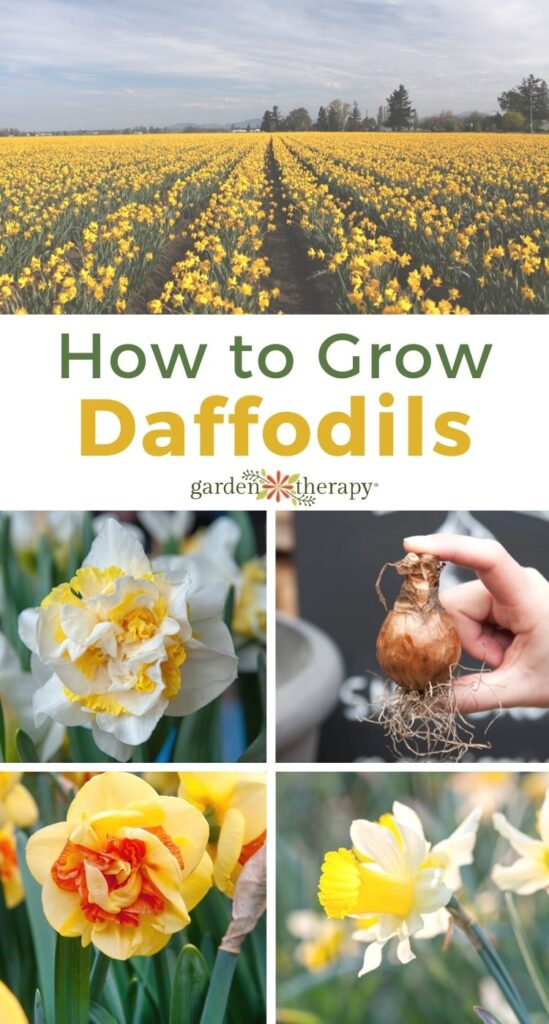Queen of the spring bulb pageant, the daffodil is everywhere after the snow melts. They come in quite a few varieties ranging from pure white to golden hues of yellow and orange. Daffodils are even more versatile than tulips and hyacinths, making them a great addition to even the toughest gardens. This daffodil care guide covers everything you need to know to have beautiful blooms welcome you into spring.

There was a time when I didn’t appreciate daffodils. I’m sure that was because I was never a huge fan of yellow, especially the iconic trumpet daffodil as seen in large bundles around Easter. They always reminded me of the Crayola primary yellow colour!
My neighbour planted a dense row of them in the bed that divided our two gardens. At first, I was a bit put off by the bank of yellow that bloomed every April, but then I grew to love the sturdiness and dependability of the sunny yellow faces that greeted me when I arrived home.
While they may be named after Narcissus, there is so much more to the daffodil than its bright yellow beauty. Let’s get into it!


Sponsored Content: I have proudly partnered with FlowerBulbs.com to share this guide on daffodils (who also provided some of the gorgeous photos in this post). We’ve partnered to help remind you that fall is bulb-planting season! There are a ton of bulbs you can purchase online at many retailers and garden centers. This is a great reminder to grab your favourite bulbs before all the good ones are sold out. Come springtime, you will be happy you took the initiative when you have a garden full of spring blooms.
The History of Daffodils
The botanical name for daffodil is Narcissus. It is believed to be named after the river god from Greek mythology of the same name. Narcissus was very beautiful and often had people fall in love with him, including the nymph Echo. However, he met her affections with disdain. This led the god of revenge, Nemesis, to make him fall in love with his own reflection. Unable to leave his own image, he eventually withered away, becoming a flower.
Daffodils also mean rebirth and new beginnings. They are one of the first flowers to emerge in spring after the frost, and they are known for brightening up the world after a dreary winter.
Daffodils are also valued in China as they grow around Chinese New Year. They represent good luck, prosperity, and good fortune. If they bloom on New Year’s Day, it means you will receive good luck for the year ahead.
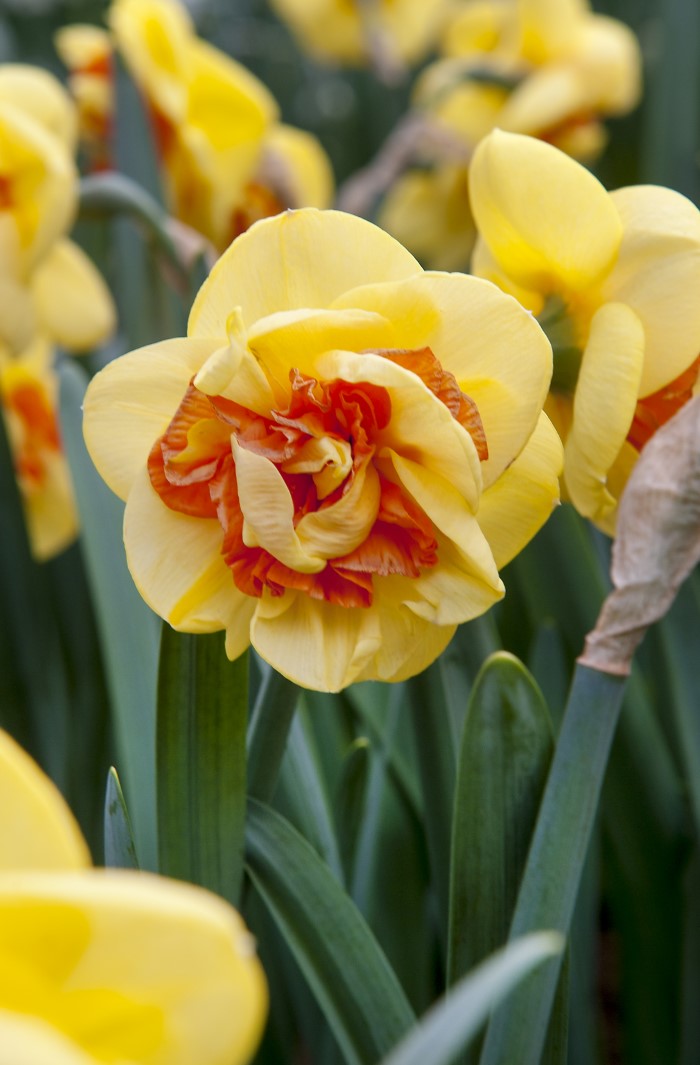

Daffodils as a Beacon of Hope
The daffodil is a beautiful mascot for a very important cause. Since the 1950s, the American Cancer Society and Canadian Cancer Society have used daffodils to represent hope for a cancer-free future. The daffodil was chosen because it represents a hardy flower that rises from the cold winter and blooms again in the spring. It represents vitality, growth, and new life.
Daffodil Month is celebrated throughout March. Daffodils are sold with all profits going towards helping those living with cancer and funding for cancer research. Next March, keep an eye out for daffodil sales in your local community to support this cause!
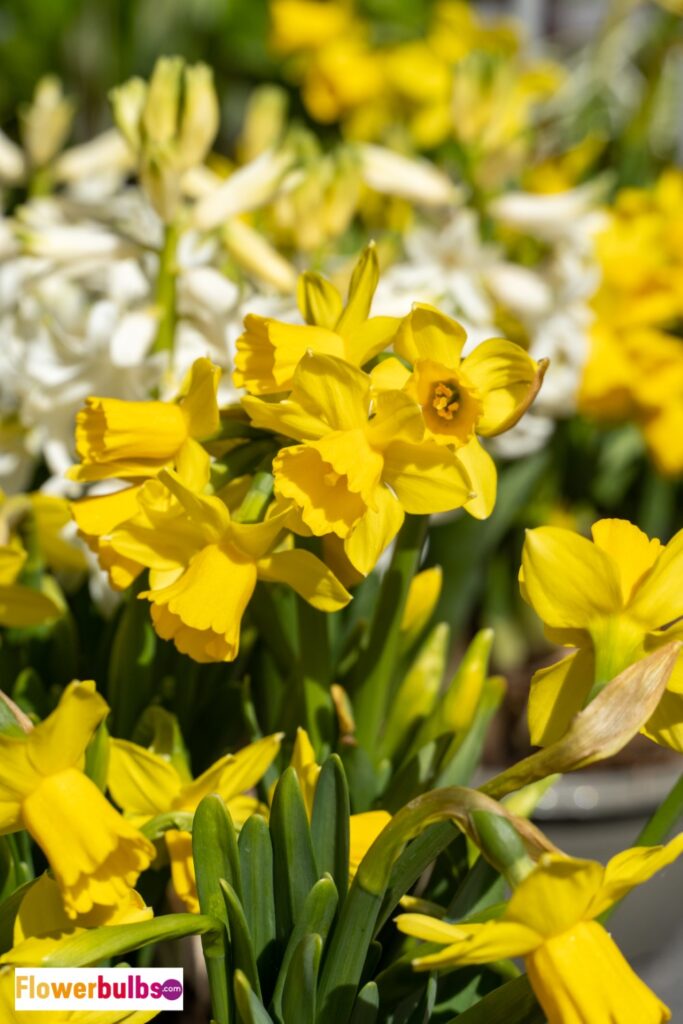

Daffodil Toxicity
It should be known that all parts of the daffodil bulb are toxic. While you may not think to reach for a daffodil when hungry, the bulbs can be mistaken for other plants, such as onions. Not to mention any curious kiddos or digging dogs out there!
Ingesting parts of a daffodil can lead to nausea, vomiting, diarrhea, and abdominal pain. While these symptoms will only last for a few hours, they can easily be avoided. The toxicity comes from the chemical lycorine. The bulb contains the highest level of lycorine but it is also present throughout the plant.
Plant daffodils in an area where pets and children don’t frequent. While I wish all plants were edible, we have to be careful about what we plant and where. Children should always be supervised in the garden and taught not to eat anything they don’t know.
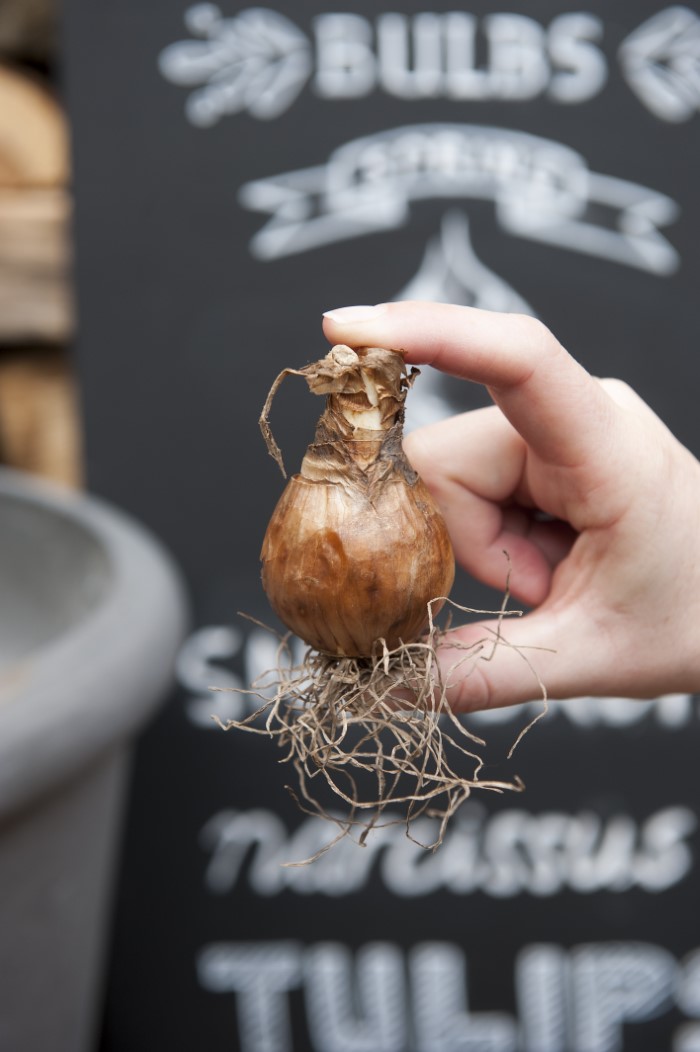

How to Plant, Grow, and Care for Daffodils
Daffodils are very popular because of their hardiness and ability to easily naturalize. They grow in zones 3-8, withstanding temperatures up to -50 degrees Fahrenheit.
That means most of us up north will have no trouble at all planting daffodil bulbs in the fall and waiting for them to bloom in the spring. They act as a perennial plant and flower early in the season. Overall, they are a fairly low maintenance bulb.
They can be planted just about anywhere, but they pair well with late-blooming perennials. Daffodils can provide some bright colour to otherwise dreary beds in the springtime. They can also be planted under shrubs and trees as they can handle shade.
Here is the lowdown on growing daffodils:
- USDA Zones: 3-8
- Flower colour: white, yellow, orange, red, and pink
- Flowering period: February – May
- Planting depth to the base of bulb: large bulbs – 8 inches; small bulbs – 5 inches
- Spacing between bulbs: 3 inches for large bulbs; 1 inch for small bulbs
- Type of bulb: true bulb
- Light requirements: full sun to full shade
- Landscape uses: daffodils are suitable for almost every possible application: fields, beds, containers, borders, rock gardens, as cut flowers, and for forcing.
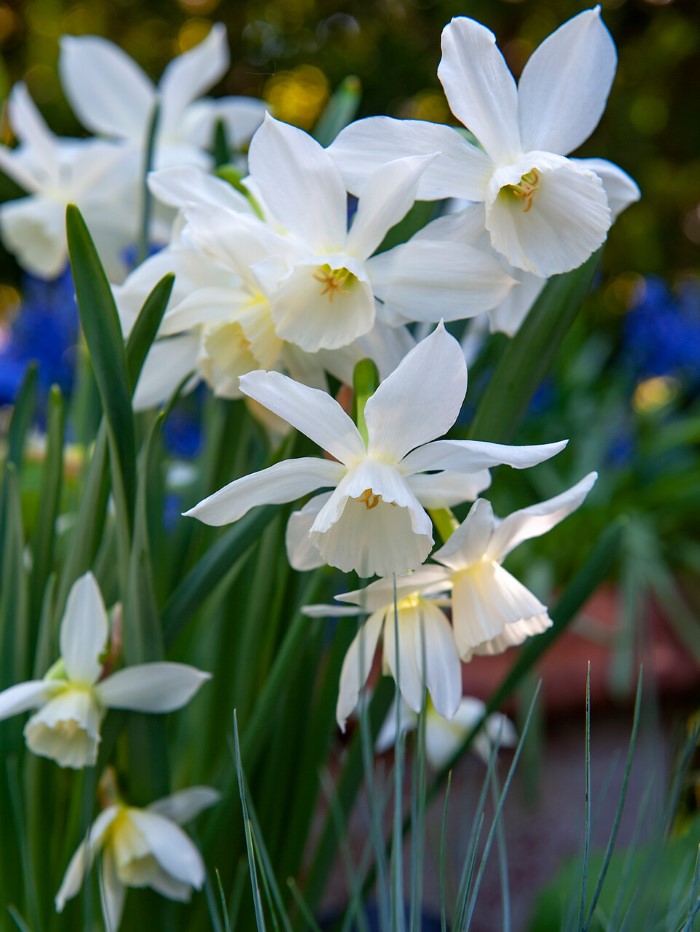

Growing Daffodils in Containers
Container gardening is becoming increasingly popular. By placing daffodil bulbs in a container, you can force them to bloom a little bit earlier in the year. These make great additions to your balcony, patio, or entranceway while other flowers take their time to spring up.
You will want to choose daffodil varieties with short stems and foliage that aren’t too big for the container. When choosing a container, make sure it is at least 10-12 inches deep and has drainage holes. You can also add a layer of clay shards to the bottom of the container for extra drainage.
Press your bulbs into loose soil five inches deep (for small daffodils). You can place them relatively close together as the bulbs will not grow wider. Place your container outside and wait for the bulbs to emerge. If is it persistently dry outside, make sure to water them.
If frost is on its way, try to move your container into a safe place that isn’t too warm, such as a garage or shed. Bulbs in containers are more susceptible to cold as it comes in from all directions.
Daffodils as Cut Flowers
I added daffodils to my front yard bulb lawn. Amongst other bulbs, I had a huge mixture of different bulbs erupt. So much so that I was able to cut some and bring them inside to enjoy!
Harvest daffodils before they’ve fully opened and when the buds are fully coloured. Their necks should be slightly nodding. Harvesting them early will give you about a week’s vase life.
Daffodils are known as one of the “dirty dozen flowers” and emit sap when harvesting, so you’ll want to wear gloves. This sap is also toxic to other flowers, so you want to avoid putting them in a vase with others immediately.
Instead, you’ll want to condition the daffodils first by placing the fresh-cut flowers in cool water for a few hours. This will allow the stem to dry out. Then, you can place them with other flowers.
While normally you want to recut flower stems to freshen them in your vase, don’t recut daffodils as they will emit their toxic sap again, killing other flowers in the arrangement.
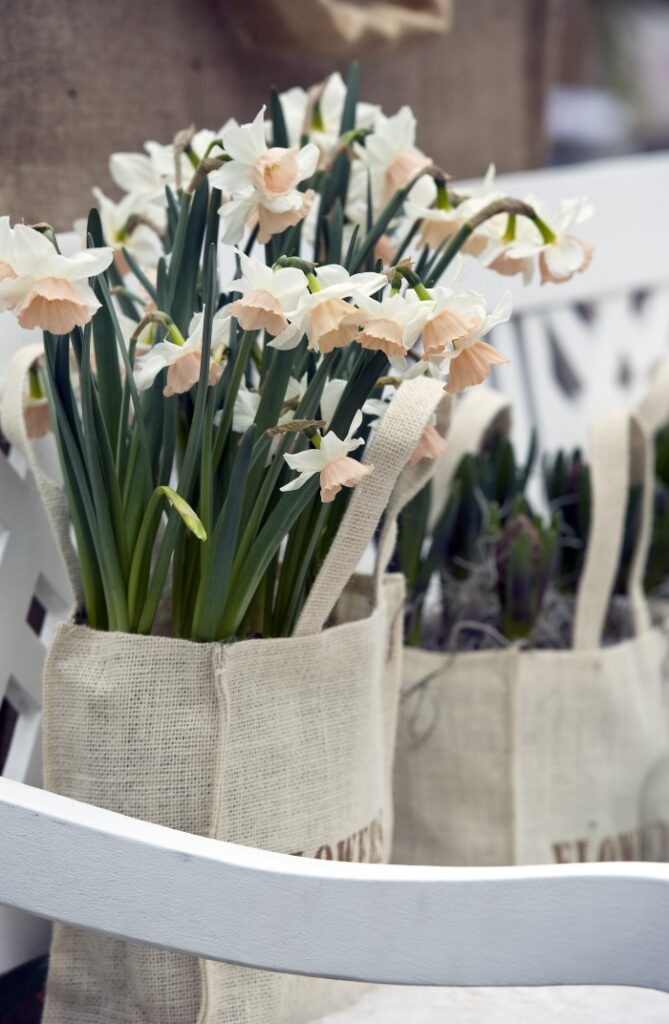

FAQ About Growing Daffodils
Most daffodils have a blooming period that can last for 4-6 weeks.
You can cut the main flower stalk after the daffodils have bloomed, but you must leave the leaves. The leaves are going to recharge the bulb so it can grow again the following year. Once the leaves begin to turn yellow and die back, you can clip back the leaves as well. Leave the bulb where it is, and it will be a sunny beacon again next year!
Yes! Daffodils are known for naturalizing in garden beds and lawns and will begin to multiply 2-3 years after initial planting. For them to naturalize, they need to be left alone to recharge the bulb until the leaves turn yellow. Consider this when planting your daffodil bulbs (ie, you may not be able to mow a lawn for a while if you place them in your grass).
Any daffodil variety should naturalize, but some are better known for it, such as Narcissus ‘Actaea’ and Narcissus ‘Tete a Tete’.
Daffodils will only bloom once per season. Their bulbs have only enough energy to produce the blooms once.
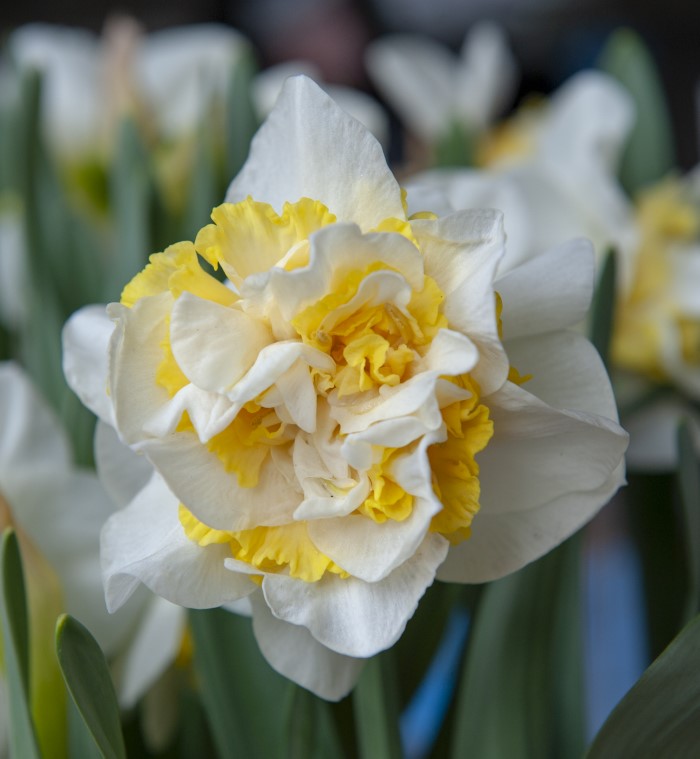

More Bulbs to Plant This Fall




